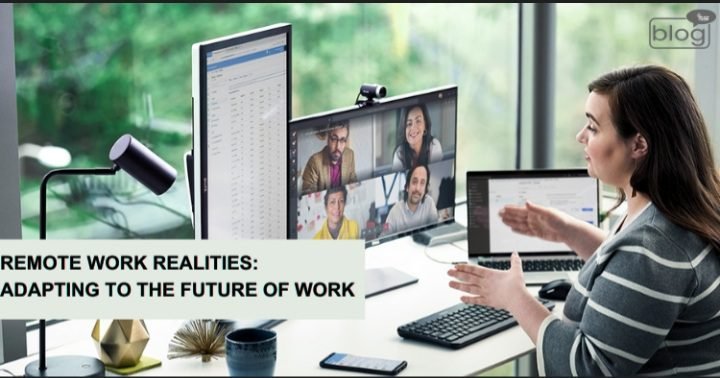The popularity of remote work has changed how we think about our jobs, making it harder to distinguish between work and home life and changing workplace dynamics as we know it. It’s critical to investigate the reality of remote work and adjust to the shifting nature of the future of work as businesses all over the world accept remote work arrangements in response to changing workplace trends and technology breakthroughs.
The COVID-19 epidemic hastened the transition to remote work, necessitating quick adaptations on the part of organizations in order to maintain business continuity and employee safety. For many businesses, remote work has evolved from a short-term solution to a long-term one, with the option remaining viable and sustainable for the foreseeable future.
Employees can work remotely from any location with an internet connection, giving them more freedom to manage their work-life balance. Many employees have found this flexibility to be a huge benefit, as it allows them to tailor their work surroundings and schedules to better meet their personal and professional requirements.
It’s crucial to understand that working remotely has its own set of particular difficulties, including managing time zone differences, getting beyond communication obstacles, and upholding work-life balance. To maximize productivity and well-being in a remote work environment, employers and employees must find a balance between structure and flexibility.
Technology is essential to making remote work possible because it offers the platforms and tools required for effective teamwork, communication, and productivity. Many digital solutions enable remote teams to stay connected and involved across geographic boundaries, from project management platforms like Trello and Asana to video conferencing systems like Zoom and Microsoft Teams.
But the dependence on technology also emphasizes how critical cybersecurity knowledge and digital literacy are in the context of distant work. To guarantee that staff members have the abilities to operate in remote work settings safely and effectively, organizations need to make training and resource investments.
The foundation of remote work is virtual collaboration, which helps dispersed teams collaborate and work together. While in-person connections are lost when working remotely, brainstorming sessions, collaborative platforms, and virtual gatherings provide new avenues for creative cooperation.
A strong sense of teamwork, common goals, and clear communication are necessary for effective virtual collaboration. Companies can cultivate a culture of collaboration by implementing virtual team-building exercises, promoting transparent communication, and utilizing collaborative tools to enable smooth cooperation and exchange of knowledge between geographically dispersed teams.
The well-being of employees is particularly challenged by remote work, which can lead to feelings of loneliness, burnout, and a blurring of work-life boundaries. It is the duty of employers to put employee well-being first and offer resources to help with these difficulties.
This could entail establishing a transparent and trusting culture, encouraging regular breaks, and advocating for work-life balance through flexible scheduling. To further promote the comprehensive well-being of remote workers, companies can provide mental health resources, employee assistance programmes, and virtual wellness initiatives.
As remote work continues to influence how work is done in the future, companies need to accept this reality and modify their strategies and procedures as necessary. Through the utilization of technology, virtual collaboration, flexibility, and employee well-being, organizations may effectively manage the challenges posed by remote work and prosper in the dynamic terrain of work in the future.
Remote work represents a fundamental shift in how we approach work in the digital age rather than just a passing fad. Organizations may fully realize the benefits of remote work and build a flexible, inclusive, and sustainable future of work for all parties concerned by accepting the realities of remote work and proactively adjusting to its opportunities and difficulties.
to read more blogs,click here
Writer
Sadia Haque
Intern
Content writing department,
YSSE

